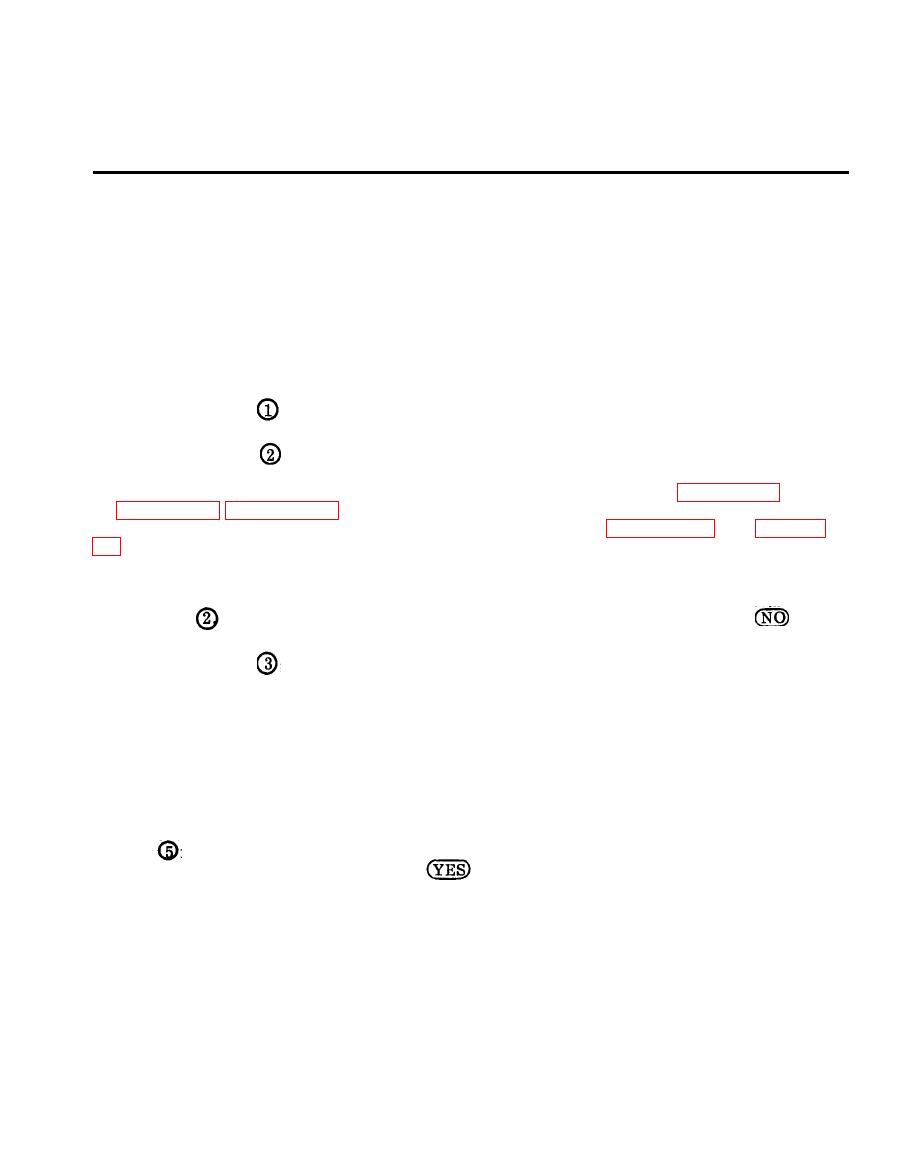 |
|||
|
|
|||
|
Page Title:
Chapter 7. SAMPLE TROUBLESHOOTING PROCEDURE |
|
||
| ||||||||||
|
|
 TM 9-2320-209-20-2-1
SAMPLE TROUBLESHOOTING PROCEDURE
of the sample procedures is to help you see how detailed troubleshooting procedures
test equipment procedures, and summary troubleshooting procedures are used to find
faults in a system.
fuel system troubleshooting procedure for the symptom, ENGINE CRANKS BUT DOES
NOT START. This symptom is one you will have when you try to start your truck
and certain parts on the truck are not working correctly. In each numbered box,
instructions are given which tell you what to do, and how to do it. A large dot is
placed next to the "what to do" instructions, and small dots next to the "how to do it"
instructions
a.Box number
gives general instructions on getting the truck ready before
you start to troubleshoot.
b. Box number
gives fault isolation test instructions. In this case you are told
to check flame heater fuel lines, and then all fuel lines and fittings. To help you find
the flame heater fuel lines that you must check, you are told to see figure 15-1, given
in chapter 15. Figure 15-1 is a support diagram that gives you a detailed picture of
the fuel lines. The right way to check fuel lines is given in figure 16-4, in chapter
there is a problem in the fuel lines. These support diagrams and tests, or checks,
are often referred to in detailed troubleshooting procedures to help you find the
problem and fix it. After you do the tests you read the question at the bottom of
box number
If the fuel lines are leaking, the answer to the question is
,
so you go to the next box.
gives you a corrective action. In this case the fault is either
c. Box number
loose fittings or bent, broken, or cracked fuel lines. The corrective action is what
you do to fix the fault, which is to tighten the loose fittings, or replace the bad fuel
lines. If the engine still doesn't start after you do this, it could mean that there are
other faults in the fuel system besides loose fittings or cracked fuel lines. When this
happens, go back to the beginning of the procedure and do each step again until you
find the other faults.
d. Sometimes the corrective actions given for a fault will tell you what to do to fix
the fault, but will not give you detailed instructions on how to fix it. Instead, you
will be told to refer to another volume in this manual for these instructions. Box
number
is an example of this. If the answer to the questions that all the fault
isolation test instruction boxes ask is
, it means that the symptom cannot be
corrected at the organizational level of maintenance. When this happens you are given
the instruction " Tell direct support maintenance. "
the multieter to do the voltage tests you will need when you do electrical system
troubleshooting.
|
|
Privacy Statement - Press Release - Copyright Information. - Contact Us |